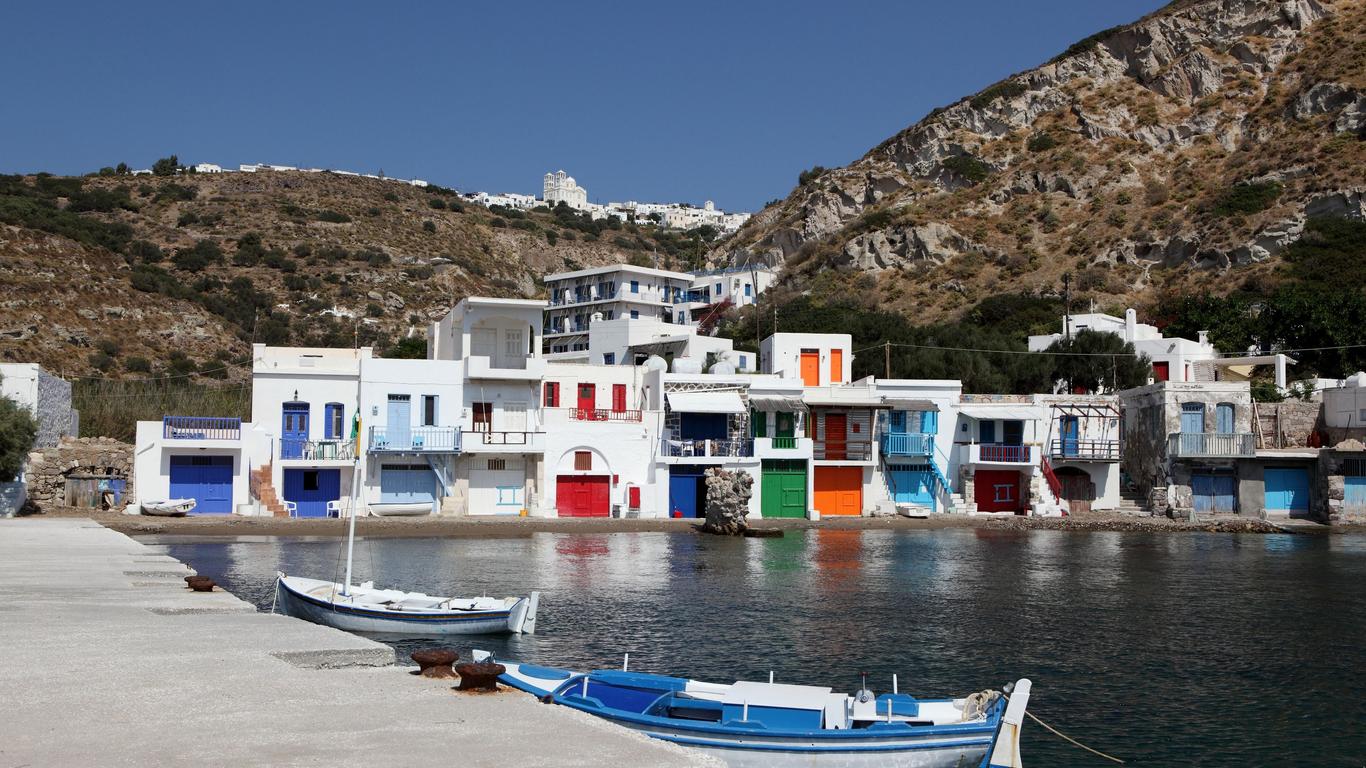Boasting turquoise waters, charming towns and an enticingly relaxed pace of life, Milos is a volcanic island in the Aegean Sea. It’s the most southwestern island in the Cyclades group and was where the Venus de Milo (now on display in the Louvre) was discovered, together with the Asclepius of Milos (now exhibited at the British Museum).
Things to do in Milos
Perched on a rock overlooking the Gulf of Milos, Plaka serves as the island’s capital and is home to traditional Cycladic architecture and atmospheric churches. Its narrow streets are blissfully car-free, while the town is renowned for offering incredible sunsets that rival those of its more famous neighbour, Santorini.
Spend a day relaxing on one of the sun-drenched beaches in Milos, which range from the moon-like Sarakiniko to the golden sands of Rivari. You can join a sailing trip to go snorkelling in the crystal clear waters of Kleftiko or take advantage of the water sports and beach bars of Ayia Kyriaki. Boat trips also access the Sikia Cave, where its collapsed roof offers stunning views of the blue sky above.
The cultural and commercial heart of Milos is Adamantas, a whitewashed harbour town that was founded by Cretan refugees in the 1830s. After admiring the 600-year-old Holy Trinity Church, you can learn about the island’s geological past at the Milos Mining Museum. If you climb to the Adamas Lighthouse, you’ll be rewarded with panoramic views across the Aegean Sea.
Getting around Milos
Regular flights from Athens connect to Milos Island National Airport, which is around 10 minutes’ drive from Adamantas. Ferries also travel from the Athens port of Piraeus to Milos and to neighbouring islands in the Cyclades group. Buses connect towns and villages across the island, although renting a motorbike or car is a convenient way of getting around.





